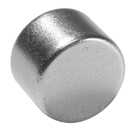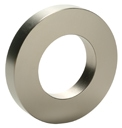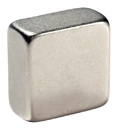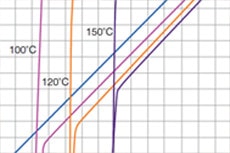NdFeB Products Overview
Adams Magnetic, a leading supplier of neodymium magnets, neodymium (NdFeB) magnet discs, rings and blocks, offers a wide range of permanent magnet solutions for a wide range of industries.
What is a Neodymium Magnet?
A Neodymium magnet, also known as NdFeB or Neo magnet, is the strongest known type of permanent magnet. Because of their lightweight, strength and the consistency of their magnetization, Neodymium Magnets have become a popular choice for a wide variety of applications, from loudspeakers to magnetic therapy jewelry. A rare earth magnet is made from an alloy of neodymium, iron, and boron.
Machining & Magnetization
Adams designs and manufactures its own magnetizing fixtures either for use in house by customers as required.
Unlike other types of magnets, Neodymium magnets have a high resistance to demagnetization. They cannot be formed with conventional drilling, turning or milling processes, and must be ground before they are magnetized. Additionally, large or complex assemblies are usually magnetized prior to assembly. Standard tolerances for Neo magnets are +/-.005 for ground dimensions. They require extremely high magnetizing fields and particular consideration must be given to this when designing complex assemblies. A Neodymium magnetcan be magnetized in any direction as long as it is aligned properly. In some instances multiple pole magnetization is not possible; when it is possible, special fixtures are required.
Temperature Considerations with Neodymium Magnets
A low coercivity grade Neodymium magnet may begin to lose strength if heated above 176°F (80°C). High coercivity grade Neodymium Magnetshave been developed to function at temperatures up to 428°F (220°C) with little irreversible loss. The need for low temperature coefficient in neodymium magnetapplications has triggered several grades to be developed to meet specific operating requirements. Please refer to our chart of magnetic properties to compare the characteristics of each grade.
Demagnetization Curves
A second quadrant demagnetization curve provides information about the magnetic characteristics of a magnet, including the magnetic field strength and how resistant it is to demagnetize. How it is used in a magnetic circuit will affect its performance. When a permanent magnet is fully magnetized, its magnetic domains are aligned. Certain conditions such as temperature and reverse magnetic fields can cause some of the domains to lose this alignment and reverse, triggering the magnet to lose some or all of its magnetic field. You can view our material curves here.
Neodymium Magnet Applications
Neodymium magnets have replaced Alnico and ferrite magnets in many applications where strong permanent magnets are required, because their greater strength allows the use of smaller, lighter magnets. These applications include:
- package closures
- displays and signs
- head actuators for computer hard disks
- magnetic resonance imaging (MRI)
- magnetic guitar pickups
- loudspeakers and headphones
- magnetic bearings and couplings
- permanent magnet motors
- cordless tools
- servo motors
- lifting and compressor motors
- synchronous motors
- spindle and stepper motors
- electrical power steering
- drive motors for hybrid and electric vehicles
- actuators










